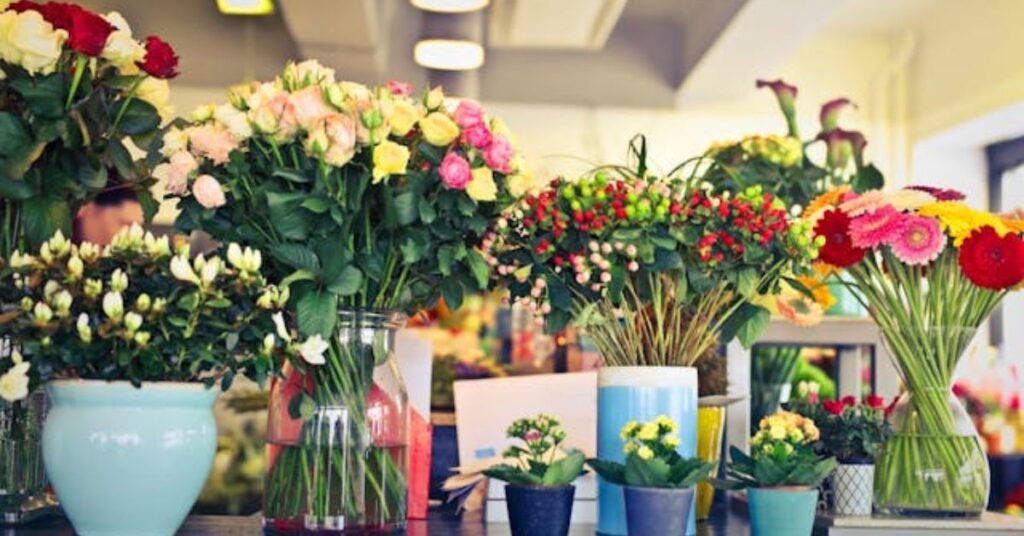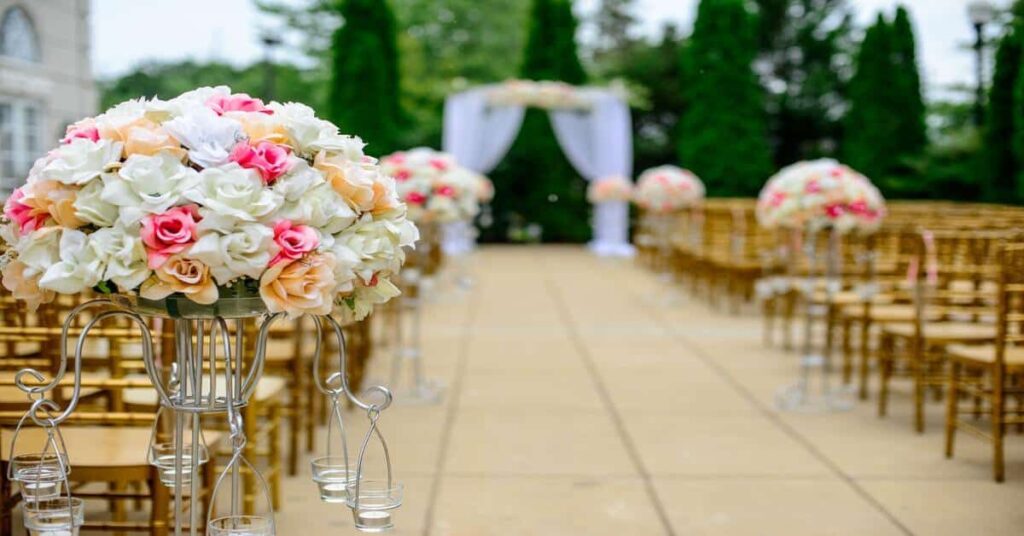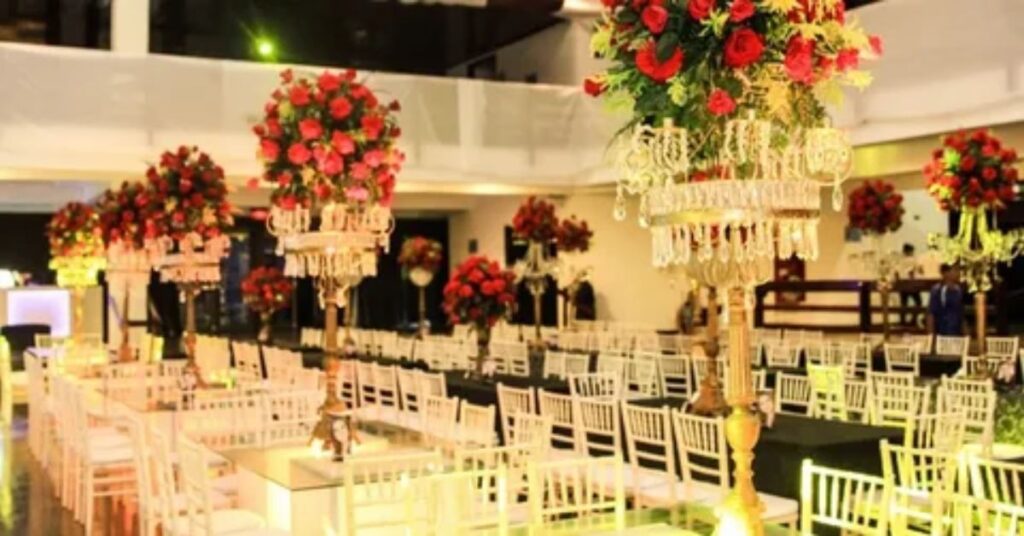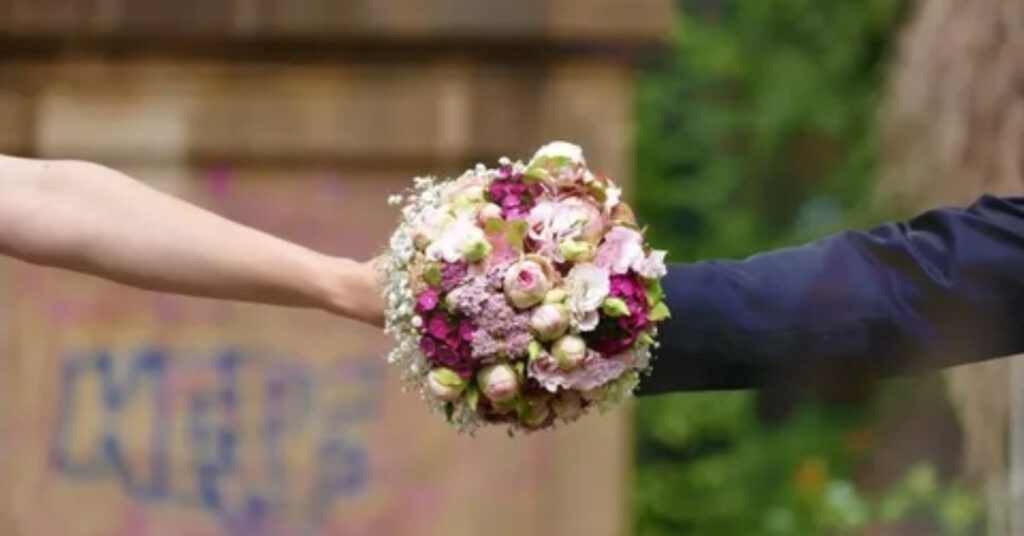Wedding bouquet involves selecting and arranging a variety of flowers, greenery, and embellishments that align with the wedding’s theme and color scheme. Start by gathering materials and tools, then arrange the flowers by building around a focal point, ensuring balance and harmony. Finally, secure the arrangement with floral tape, wrap the stems with ribbon, and add any personal touches to complete the bouquet.
Crafting your own wedding bouquet is a deeply personal and creative journey, where every petal and stem can reflect your unique love story. Imagine walking down the aisle holding a masterpiece you designed yourself, perfectly tailored to your wedding theme. With just a few simple steps, you can transform your vision into a stunning floral arrangement that will be cherished for years to come.
a wedding bouquet involves selecting flowers that match your theme and color scheme, arranging them carefully to create a balanced and beautiful composition, and securing the stems with floral tape and ribbon. Start by choosing a mix of focal flowers, fillers, and greenery, then arrange them in layers to achieve the desired shape. Finally, wrap the stems tightly, adding decorative touches like ribbons or charms to personalize the bouquet.
Choosing the Right Flowers

Choosing the right flowers for your wedding bouquet is crucial in setting the tone for your entire event. Start by considering seasonal blooms, as they are often more affordable and readily available, ensuring freshness. Additionally, select flowers that complement your wedding color scheme, helping to create a cohesive and visually appealing look.
Beyond color, think about the types of flowers that best suit your style—whether it’s classic roses for a traditional wedding or wildflowers for a rustic vibe. It’s also important to balance focal flowers with fillers and greenery to add depth and texture to your bouquet. This thoughtful selection process ensures that your bouquet not only looks beautiful but also reflects your personal taste and the overall theme of your wedding.
Selecting seasonal blooms
Selecting seasonal blooms ensures that your bouquet features flowers at their peak freshness and beauty, often leading to more vibrant colors and better prices. Seasonal flowers are also typically more accessible, reducing the risk of delays or substitutions. By choosing blooms that are in season, you align your bouquet with the natural rhythm of the year, enhancing its overall aesthetic and connection to your wedding’s time of year.
Considering color schemes
Considering color schemes is essential for creating a cohesive and visually pleasing bouquet that complements your wedding theme. Choose flowers in shades that match or accentuate your wedding colors, ensuring harmony between the bouquet and other elements like the bridesmaids’ dresses and venue decor. By aligning your bouquet’s colors with your overall color scheme, you enhance the aesthetic flow and create a unified look for your special day.
Read this blog: Wedding Party Pictures
Balancing flower types (focal, filler, greenery)
Balancing flower types is key to a well-rounded and visually appealing bouquet. Start with focal flowers as the main attraction, using bold and prominent blooms to draw attention. Add filler flowers to fill in gaps and create texture, and incorporate greenery to provide contrast and support the overall structure. This mix ensures your bouquet is both eye-catching and harmonious, with depth and balance in its design.
Gathering Materials and Tools

Gathering the right materials and tools is essential for crafting a beautiful wedding bouquet. Start with basic tools like sharp floral scissors or shears, floral tape, and wire, which are necessary for trimming stems and securing the arrangement. You’ll also need a variety of ribbons or fabric for wrapping the bouquet handle, as well as decorative pins or charms for added elegance.
In addition to tools, gather your flowers and greenery, making sure they’re properly conditioned and hydrated before you begin arranging. Keep a bucket of water nearby to keep the stems fresh as you work. Having all your materials organized and ready will make the bouquet-making process smoother and more enjoyable.
Essential tools (floral tape, scissors, etc.)
Essential tools for making a wedding bouquet include floral tape, which helps secure stems and hold the arrangement together; sharp scissors or floral shears for precise cutting; and floral wire to support and shape delicate stems. Additionally, having a floral foam block or vase for conditioning and hydrating flowers, along with ribbon or fabric for wrapping the bouquet handle, ensures you have everything needed to create a beautiful and sturdy bouquet.
Read Also this blog; Wedding Party Pictures
Additional embellishments (ribbons, pins, etc.)
Additional embellishments like ribbons, pins, and decorative charms add a personal and elegant touch to your bouquet. Choose ribbons in colors or textures that complement your wedding theme and wrap them around the bouquet handle for a polished finish. Decorative pins or charms can be used to secure the ribbon or add unique accents, such as a family heirloom or a meaningful charm. These details not only enhance the bouquet’s appearance but also make it a special keepsake from your wedding day.
Preparing flowers and greenery
Preparing flowers and greenery involves several steps to ensure they are fresh and ready for your bouquet. Begin by trimming the stems at an angle and removing any leaves or thorns that will be below the waterline to prevent rot. Place the flowers and greenery in a bucket of water with floral preservative to keep them hydrated and vibrant. Allow them to condition for several hours or overnight to ensure they are at their best when you start arranging. Proper preparation is crucial for a long-lasting and beautiful bouquet.
Arranging the Flowers

Arranging the flowers is where your bouquet starts to take shape and reflect your vision. Begin by selecting a focal flower, which will serve as the centerpiece of your arrangement, then gradually add in filler flowers and greenery around it. As you layer the flowers, rotate the bouquet to ensure it looks balanced from all angles.
Pay attention to the height and positioning of each stem to create a natural, flowing look, avoiding a stiff or overly symmetrical arrangement. Varying the textures and sizes of the flowers adds depth and interest, while greenery helps to soften the edges and bring the whole arrangement together. By the end, your bouquet should feel cohesive and full, with a pleasing mix of colors and shapes that suit your wedding style.
Creating a focal point
Creating a focal point in your bouquet involves selecting a standout flower or arrangement that draws attention and serves as the centerpiece of your design. Choose a bloom with a unique shape, color, or texture to serve as the visual anchor of the bouquet. Position this focal flower in the center or slightly off-center, and arrange other flowers and greenery around it to enhance and complement its prominence. This approach ensures that your bouquet has a clear, eye-catching element that guides the overall composition and visual impact.
Building layers with filler flowers and greenery
Building layers with filler flowers and greenery adds depth and texture to your bouquet, creating a fuller and more dynamic arrangement. Start by placing your focal flowers in the center, then add filler flowers around them to fill gaps and provide visual interest. Use greenery to frame and support the flowers, layering it in between to add a natural, lush look. This method not only enhances the bouquet’s overall shape and volume but also ensures a balanced and cohesive design.
Maintaining balance and symmetry
Maintaining balance and symmetry in your bouquet ensures a pleasing and harmonious arrangement. As you add flowers and greenery, regularly rotate the bouquet to check for even distribution from all angles. Aim for a balanced mix of colors, shapes, and sizes, positioning focal flowers and fillers in a way that distributes visual weight evenly. Adjust as needed to achieve a symmetrical look, ensuring the bouquet feels cohesive and well-proportioned. This attention to balance and symmetry creates a polished and aesthetically pleasing final product.
Binding the Bouquet

Binding the bouquet is the final step to secure your arrangement and give it a polished look. Start by holding the bouquet stems tightly together and wrapping floral tape around them, just below the blooms, to keep everything in place. Make sure the tape is snug but not too tight, as this could damage the stems.
Once the stems are secure, wrap a ribbon or fabric of your choice around the taped area, covering it completely for a neat finish. You can tie the ribbon in a bow or use decorative pins to secure it in place. This not only adds a personal touch but also ensures the bouquet is comfortable to hold throughout your wedding day.
Using floral tape for securing stems
Using floral tape to secure stems is a key step in assembling a stable and durable bouquet. Begin by wrapping the tape around the stems just below the blooms, ensuring it’s tightly secured to hold everything in place. The tape should cover all stems and any exposed areas to create a unified handle. This method not only provides stability but also helps to maintain the bouquet’s shape and structure, making it easier to handle and present on your wedding day.
Wrapping stems with ribbon
Wrapping stems with ribbon is a finishing touch that adds elegance and personal flair to your bouquet. Start by securing the stems with floral tape and then wrap the ribbon around the taped area, covering it completely. Ensure the ribbon is wrapped tightly but smoothly to avoid any bulges or gaps. You can tie the ribbon in a bow or use decorative pins to secure it, allowing you to add a touch of style and complement your wedding theme. This final detail enhances the bouquet’s appearance and provides a comfortable grip for the bride.
Preserving the Bouquet
Preserving your bouquet ensures that it remains fresh and beautiful for your wedding day and beyond. Before the event, keep the bouquet in water and store it in a cool place to prevent the flowers from wilting. Mist the petals lightly with water to maintain their freshness, and avoid exposing the bouquet to direct sunlight or heat.
After the wedding, if you want to preserve the bouquet as a keepsake, consider options like air drying, pressing, or using silica gel to retain the flowers’ shape and color. Alternatively, you can have the bouquet professionally preserved, turning it into a lasting memento of your special day. Proper preservation techniques will help you cherish the memories long after the wedding is over.
Transporting the bouquet safely
Transporting the bouquet safely involves careful handling to maintain its freshness and shape. Place the bouquet in a sturdy box or container, ideally with a small amount of water or floral foam to keep the stems hydrated. Avoid packing it too tightly to prevent damage to the flowers. Ensure the bouquet is secure and upright during transit to avoid any crushing or wilting. If possible, transport it in a cool, shaded area to protect it from heat and direct sunlight, preserving its beauty for your wedding day.
Tips for preserving after the event
After the event, preserving your bouquet involves several methods to keep it as a cherished keepsake. One option is to air-dry the bouquet by hanging it upside down in a cool, dry place away from sunlight. Alternatively, you can use silica gel to dry the flowers while retaining their shape and color.
Another option is to have the bouquet professionally preserved through techniques like pressing or encasing in resin. Each method helps maintain the bouquet’s beauty and serves as a lasting memory of your special day.
Customizing Your Bouquet
Customizing your bouquet allows you to add personal touches that make it truly unique to you and your wedding. Start by incorporating meaningful elements such as family heirlooms, like a locket or brooch, which can be attached to the bouquet handle for a sentimental touch. You can also choose flowers that hold personal significance or reflect your own style and preferences.
tailor the size and shape of the bouquet to complement your dress and overall wedding theme. For a classic look, opt for a round, compact bouquet, while a cascading design might suit a more dramatic gown. Customizing your bouquet not only enhances its visual appeal but also ensures it resonates with your personal story and style.
Adjusting the bouquet size and shape
Adjusting the bouquet size and shape is important to ensure it complements your wedding dress and overall style. For a more dramatic look, consider a larger, cascading bouquet, while a smaller, rounded bouquet might suit a more understated or classic dress.
Tailor the bouquet’s shape to fit the formality and theme of your wedding, ensuring it harmonizes with your gown and enhances your overall appearance. Adjusting these elements helps create a balanced and cohesive look that complements both you and your wedding setting.
Matching the bouquet to the wedding theme
Matching the bouquet to the wedding theme involves selecting flowers, colors, and styles that reflect the overall atmosphere and aesthetic of your event. Start by incorporating colors and floral varieties that align with your theme, whether it’s a classic, rustic, vintage, or modern style.
Consider the venue’s decor and your dress to ensure the bouquet complements and enhances the overall look. By aligning the bouquet with your wedding theme, you create a cohesive and visually appealing experience that ties all elements of your special day together.
Conclusion
wedding bouquet is a thoughtful and creative process that allows you to craft a personalized and beautiful centerpiece for your special day. By carefully selecting the right flowers, arranging them with a balance of focal points, fillers, and greenery, and adding personal touches like ribbons and charms, you ensure that your bouquet not only complements your wedding theme but also reflects your individual style. Attention to detail, from preparing and arranging to binding and preserving, plays a crucial role in achieving a stunning and durable bouquet.
a well-crafted wedding bouquet enhances your overall wedding experience, serving as a cherished keepsake and a symbol of your special day. By following these steps, you can create a bouquet that is not only visually striking but also meaningful, capturing the essence of your celebration and adding a memorable touch to your wedding.
Frequently Asked Questions
How to create a wedding bouquet?
To create a wedding bouquet, select and arrange flowers and greenery, secure them with floral tape, and finish with ribbon or embellishments to reflect your style and theme.
Is it cheaper to make your own wedding bouquets?
Yes, making your own wedding bouquets is often cheaper than purchasing them from a florist, as you can buy flowers directly and avoid labor costs. However, it requires time, effort, and some floral knowledge to ensure a professional-looking result.
How do you make a bouquet step by step?
To make a bouquet, arrange your chosen flowers and greenery, secure the stems with floral tape, wrap with ribbon, and make any final adjustments for balance and shape.
